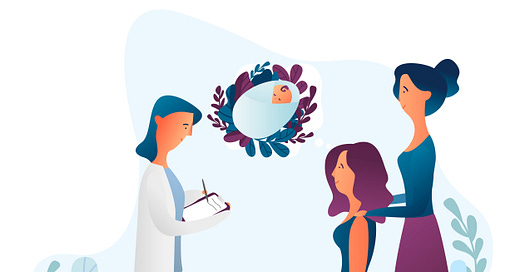Study reveals complex motivations behind two-mother family formation
"Her bun in my oven": Motivations and experiences of two-mother families who have used reciprocal IVF (Shaw, 2023)
Shaw, K., Bower-Brown, S., McConnachie, A., Jadva, V., Ahuja, K., Macklon, N., & Golombok, S. (2023). "Her bun in my oven": Motivations and experiences of two-mother families who have used reciprocal IVF. Family Relations, 72(1), 195-214. https://doi.org/10.1111/fare.12805
Geographic Region: United Kingdom
Research Question: What motivates same-gender female couples to choose reciprocal IVF, and do their experiences of becoming and being a mother via reciprocal IVF match their pre-parenthood expectations?
Design: Qualitative study using semi-structured interviews. Data analyzed using reflexive thematic analysis.
Sample: 28 parents from 14 families who had a child aged 0–3, had accessed reciprocal IVF in the United Kingdom between 2017–2020, and were still cohabiting at the time of interview. High socioeconomic status (90% in professional/managerial occupations) and 90% of mothers identified as White-British or White-Other.
Key Findings
Couples chose reciprocal IVF for many different reasons. Some wanted to share the experience of becoming parents together, with both mothers playing important biological roles. Some couples hoped having biological connections would help others see them both as "real" mothers. Others chose this path because of medical needs or practical reasons.
The reality of parenthood sometimes differed from what couples expected. Even though both mothers had biological connections to their child, they still sometimes faced questions about who was the "real" mother. The mother who gave birth often felt an immediate strong bond with the baby, while the genetic mother's experience of bonding varied from family to family.
Cost was an important factor for many families. Some couples had to make difficult choices about their treatment because reciprocal IVF is expensive. A few families participated in egg-sharing programs to help make the treatment more affordable.
Both the mother who provided the egg and the mother who carried the pregnancy could experience feelings of jealousy or insecurity. The genetic mother sometimes felt left out during pregnancy and early bonding, while the gestational mother sometimes felt insecure about not sharing genetic traits with the child.
Limitations: Potential selection bias - families with positive experiences may be more likely to participate. Homogeneous socioeconomic status
Applications: Shows varied experiences of parent-child bonding regardless of biological connection. Demonstrates the need to support both genetic and gestational parents equally during the perinatal period.
Funding Source: Economic and Social Research Council, Grant/Award Number: ES/S001611/1
Lead Author: Kate Shaw is a researcher at the Centre for Family Research, University of Cambridge, specializing in family relationships and assisted reproduction.
Regulatory Context
The Human Fertilisation and Embryology Authority (HFEA) is the UK's independent regulator overseeing fertility treatment and research using human embryos.
In 2005, the UK changed its laws regulating gamete donation from anonymous donation to identifiable donation.
As of October 2023, donor-conceived people conceived on or after April 1, 2005, can access information about their donor's identity and request information about the identity of any donor siblings who have also expressed interest in contact at age 18.
Those conceived before the law change in 2005 do not have the same legal right to identifying information about their donors, who were guaranteed anonymity at the time of donation.
The UK has a voluntary register called the Donor Conceived Register (DCR), which allows donors and donor-conceived people from before 2005 to voluntarily register and potentially match with each other.



